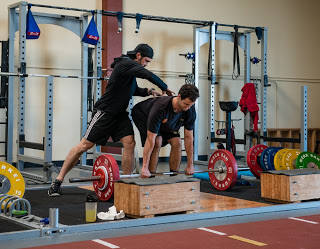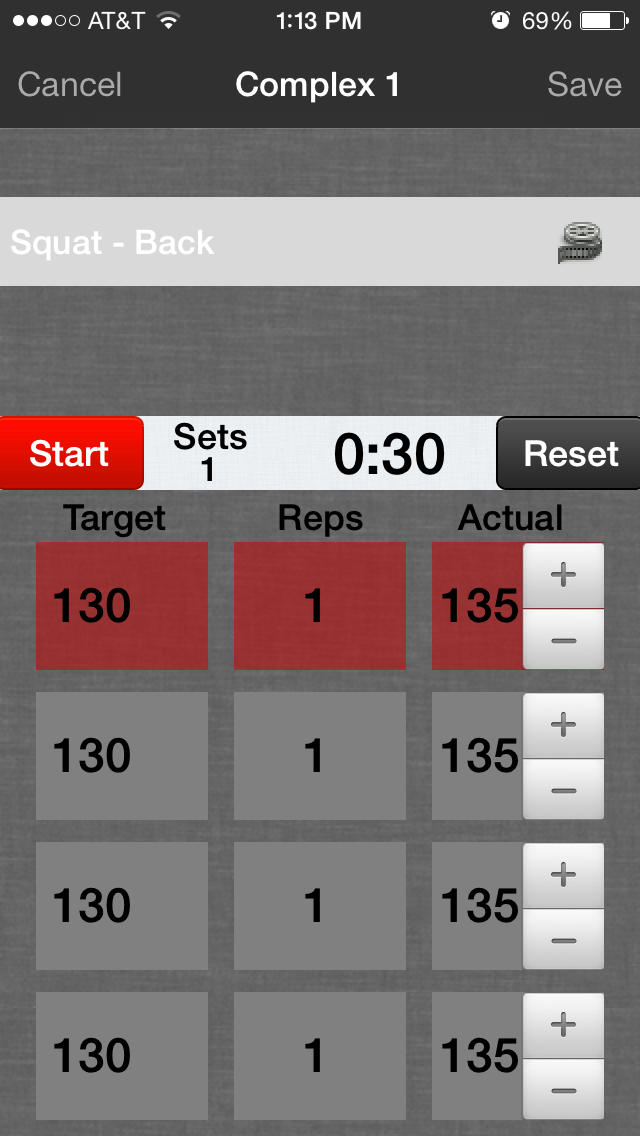
(Photo by Cameron Spencer/Getty Images)
The Strength and Conditioning or Sports Performance staff often has the worst coach to athlete ratio of any other department within an organization. This is troubling for many reasons: safety, culture, accountability, and coaching quality just to name a few. Spending time in both well and underfunded organizations, we have found a few simple ways to get the most out of your situation, and in turn help your athletes the most.
When it comes to running a session in your weight room logistics always reign king. What is your coach to athlete ratio? How many platforms and barbells do you have? How much time are you allotted each session? Do you have an area for sprints and plyos? These are just some of the questions a coach must answer before designing a program for his or her athletes. At our Performance Center we have the luxury of a 1:4 coach to athlete ratio. We know this is unheard of for most strength coaches, as much of our staff has coached at the collegiate level with something more like a 1:40 coach to athlete ratio. That simple fact changes everything.
One of the simplest ways to help manage a training session is to put your athletes into groups based on needs. This may seem like common sense, but as more and more organizations are understanding the value of creating programs based on individual athletes’ needs the more challenging controlling a training session can be. This realization is good for helping our athletes as individuals, but can be a challenge for the coach in the team setting if you have 20 different exercises or variations all being done at the same time. Many of our partners create groups of athletes based on position, training age, and movement quality needs with great success. Putting your athletes into a handful of smaller groups based on their needs will allow for you to actually coach movements instead of manage athletes.

With space and time often being the biggest limiting factors, pairing or complexing your exercises can allow you to make better utilization of these valuable resources. Again the challenge becomes more exercises happening at one time which is harder for the coach to manage, and to coach well. Because movement quality matters, coaching matters. There are many different ideas and concepts for how and why to complex exercises, often to create a potentiating effect or do complimentary mobility work. But the simple fact of the matter is more often than not you should complex high coaching intensive exercises with low coaching intensive exercises. If you have one coach and 40 athletes, complexing a Clean with a Split Squat is a recipe for disaster. The popularization of methods such as French Contrast training are on the rise, but when logistics come into play we prefer to do simple better.

Using a timer allows for three main benefits:
Manage training sessions
Cultivate culture and accountability
Control training density
By simply using a timer you and your athletes should know where they should be and what they should be doing at all time. If all athletes know twenty minutes into a training session they should be setting up for their second complex of exercises, this again should help you to coach and not herd. Likewise, if the session should take 50 minutes and a group of athletes say they are done after 35, to it is easy for you and your team leaders to see who may need to be talked to about focus, intent, and accountability. Lastly by using a timer you are able to control and increase training density , for as we know the goal isn’t simply to be faster and stronger, but to do these things more consistently and more often. Our partners using the Sparta Software have access to our Sparta App which not only allows the athlete to view and track their progress in their training programs, but the built in timer allows for individualized timers for each athlete based on their needs.
The weight room and coaching staff is often underfunded and undervalued, but as a coach it is your job to help your athletes not make excuses. To do this well, use these simple ideas when creating programs and running training groups to allow you to do what you were hired to do, coach your athletes.